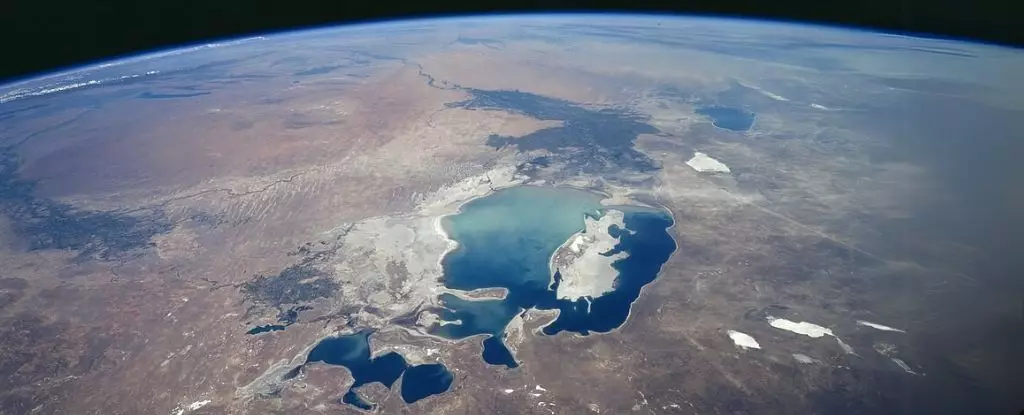Once heralded as the fourth largest lake in the world, the Aral Sea, situated between Uzbekistan and Kazakhstan, served as a vibrant aquatic haven, covering an expanse of 68,000 square kilometers (26,000 square miles). However, by 2015, this majestic body of water was tragically transformed into a desolate wasteland, giving birth to the infamous Aralkum Desert. This transformation, attributed largely to state-sponsored agricultural expansion, starkly illustrates the complex interplay between human activity and environmental degradation. With only about 8,000 square kilometers of water remaining, the Aral Sea’s fate stands as one of the gravest environmental disasters of our time, directly affecting the livelihoods of approximately 3 million people residing in the surrounding regions.
The Seeds of Decline
The dramatic decline of the Aral Sea began in the 1960s, fueled by the Soviet Union’s ambitious drive to cultivate massive cotton fields. The Amu Darya and Syr Darya rivers, which once nourished the lake, were diverted for extensive irrigation projects covering over 7 million hectares (1.7 million acres). This misguided prioritization of agricultural output over ecological sustainability resulted in the lake’s astonishing depletion. The remaining vestiges of the Aral Sea are not merely a statistic; they are remnants confirming a catastrophic lapse in environmental stewardship. Over the decades, salinity levels soared to alarming heights, rendering the remaining waters inhospitable to most marine life and dismantling the intricate ecosystems that had flourished for centuries.
The ecological repercussions of the Aral Sea’s decline extend far beyond its shores. Research has shown that the dramatic reduction in water cover has caused atmospheric dust levels in the region to increase significantly, almost doubling between 1984 and 2015. This dust, once settled peacefully on the lakebed, now swirls into the air, adversely affecting air quality in cities up to 800 kilometers (500 miles) away. The toxic makeup of the Aralkum desert dust—containing dangerous remnants from Soviet-era chemical weapons tests, fertilizers, and pesticides—poses severe health risks to the local populace. Studies indicate correlations between dust exposure and soaring rates of respiratory illnesses and congenital defects in both children and adults.
Attempts at Recovery: A Vegetative Solution?
In response to this dire situation, regional governments have initiated efforts to stabilize the lakebed and mitigate dust storms by introducing plant life that can thrive in saline conditions. Local scientists are diligently searching for resilient species capable of resisting the harsh environment now characterizing the former lake. International bodies like the EU and USAID have shown interest in supporting these rehabilitative efforts, yet uncertainty looms over the sustainability and efficacy of these interventions. The enormous scale of the damage suggests that a mere vegetation project may not suffice in remedying the deep-rooted issues stemming from decades of mismanagement.
The tragedy of the Aral Sea is not merely a localized environmental crisis; it represents a harrowing cautionary tale applicable on a global scale. Similar scenarios are unfolding in lakes and aquifers around the world due to industrial agriculture, climate change, and urban expansion. The lessons derived from the Aral Sea’s plight highlight the critical need for sustainable water management practices, as well as an urgent reevaluation of agricultural policies that prioritize short-term gains over long-term ecological health.
As the world contends with escalating water scarcity and environmental degradation, the Aral Sea’s demise serves as a poignant reminder of the consequences of neglecting natural ecosystems. It is essential to understand that today’s actions will shape tomorrow’s environment; consequently, prioritizing water for local ecosystems is not an optional pursuit but a necessity for the future of communities worldwide. Ignoring the lessons presented by the struggle of the Aral Sea may lead to even greater global crises that could echo far into the future, affecting generations yet unborn. The catastrophic decline of this once-thriving lake stands as a testament to humanity’s responsibility toward nature, urging us all to act decisively before it is too late.


Leave a Reply